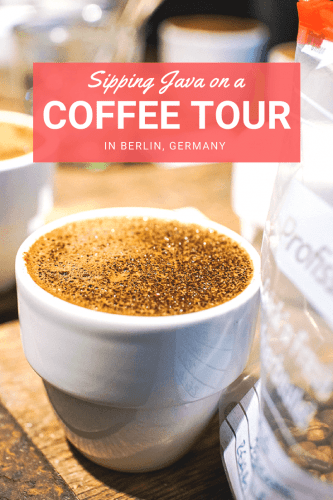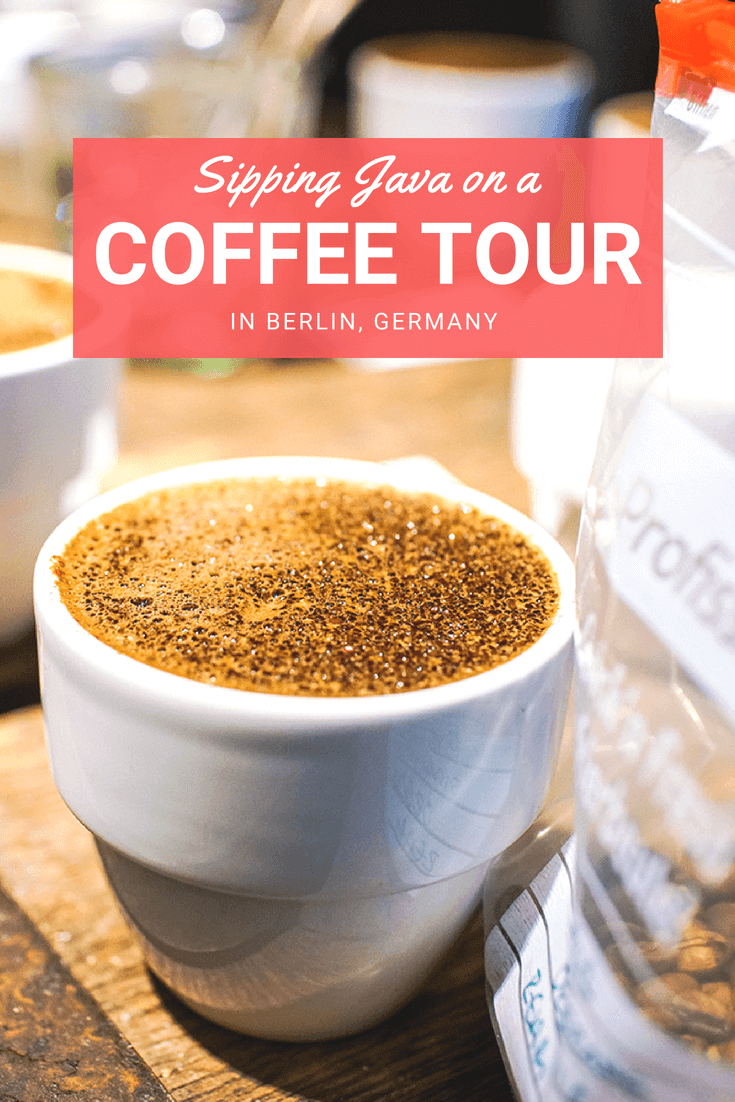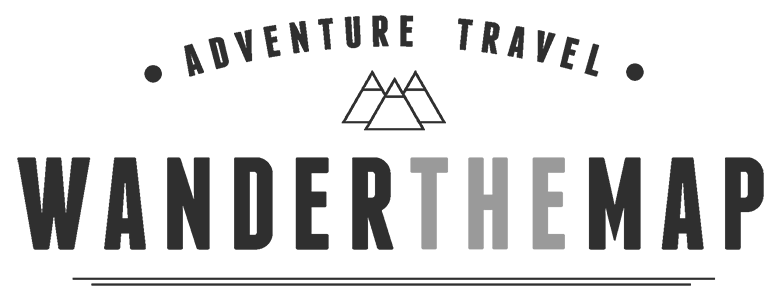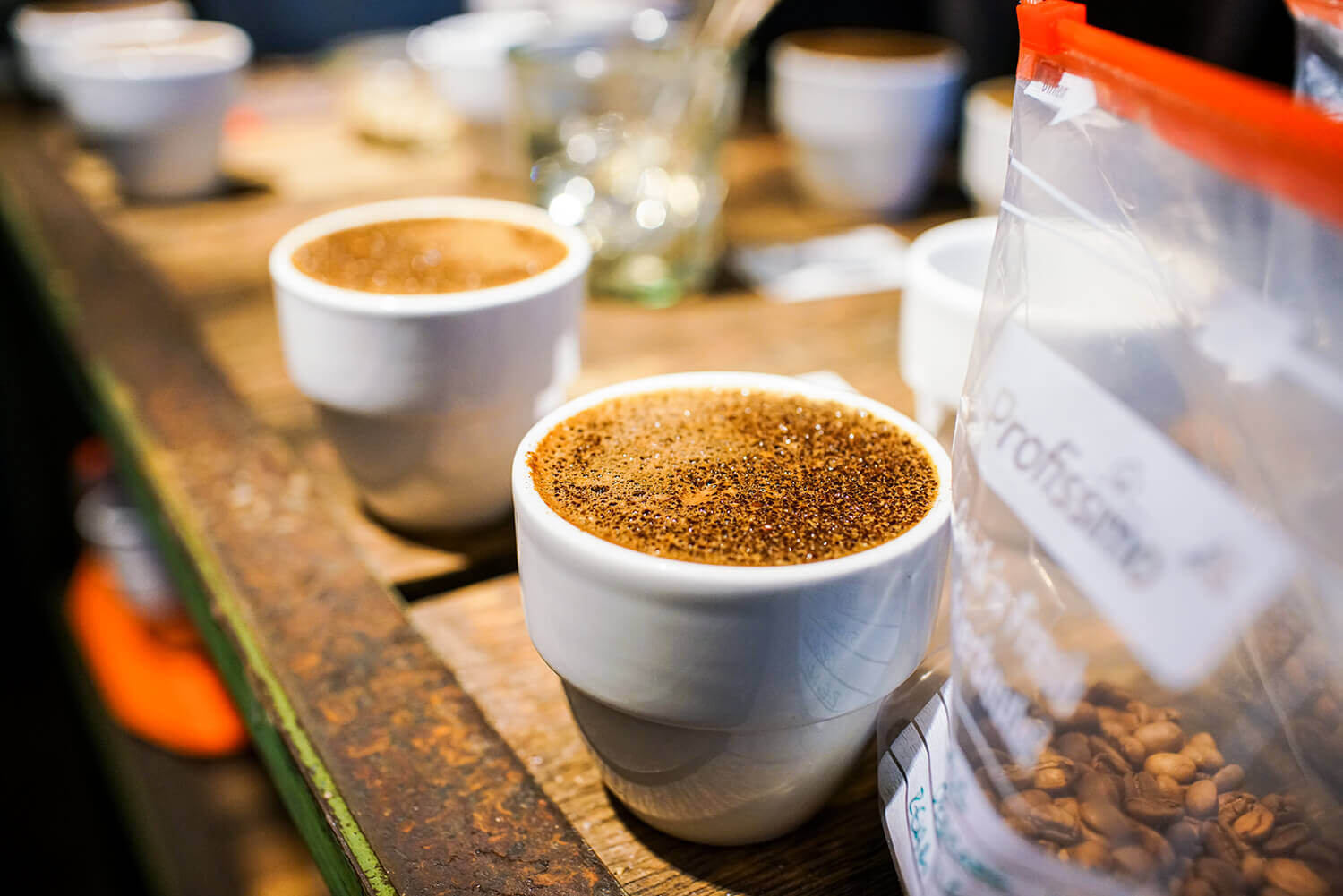
01 Sep Sipping Java: Coffee Tour in Berlin, Germany
When I spotted a coffee tour in Berlin during our visit to Germany’s capital, I knew we just had to sign up. Coffee is a necessity in our household. A day rarely goes by where we aren’t sipping on multiple cups of joe. Now, we really aren’t fans of “fancy coffees” like lattes, macchiatos, cappuccinos, and the like. We do enjoy them on rare occasions, but our hearts lie in solidarity with drip coffee. Black, please. When chatting with people around the world, we’ve found most tend to associate black coffee with an americano (which is an espresso with water) or the icky, bland cup of joe that you get at a diner. Neither of these drinks are our idea of an enjoyable coffee—to us, a delicious coffee is made with quality beans that have been specially roasted and brewed. Thankfully, coffee has evolved over time, and now, you can find delicious artisan roasts in many locations around the world.
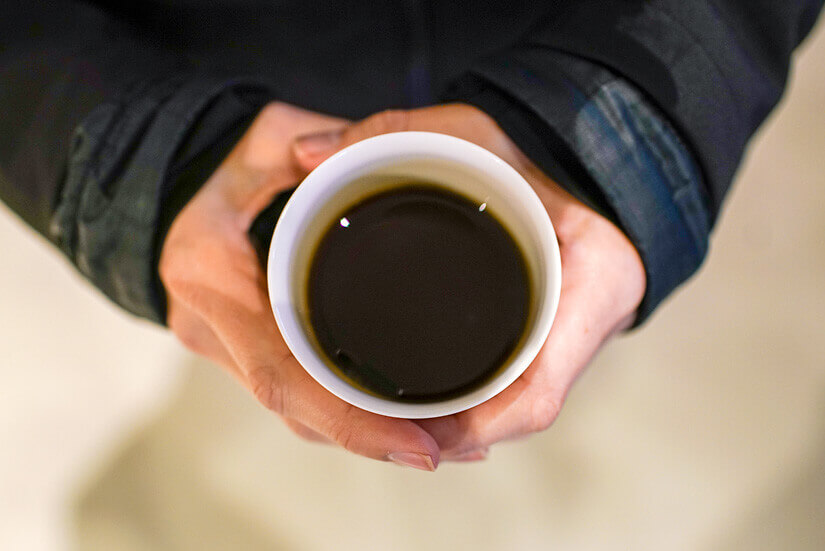
I wasn’t sure what type of coffee we would find during our three hour coffee tour in Berlin, but we were pleasantly surprised to find we would be spending a couple of hours sipping and learning about our favorite type of coffee. The tour we joined was “The Berlin Coffee Tour” with When in Berlin. We had four stops to make, and the tour started in the Kreuzberg neighborhood. Kreuzberg is an area filled with street art, cafes, and thrift shops—it’s a pretty funky place.
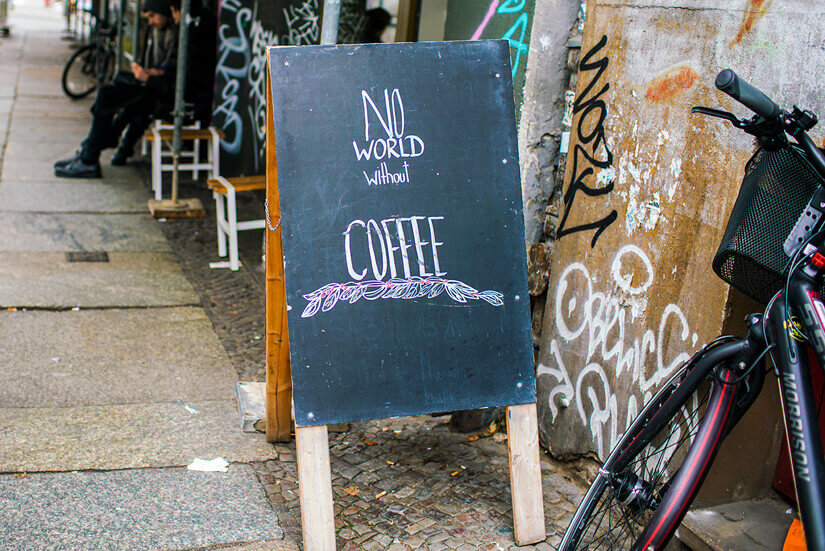
At each stop on the tour, we would sample a different type of coffee and learn what makes each cup of coffee unique. Between each coffee shop, we discussed history and facts about coffee, the Kreuzberg neighborhood, and the surrounding community. Our guide, William, was originally from Australia, but he has been living in Berlin for many years and has an in depth knowledge of the city. We learned so much about both Berlin and coffee throughout the tour, which opened our eyes to different perspectives on both topics.
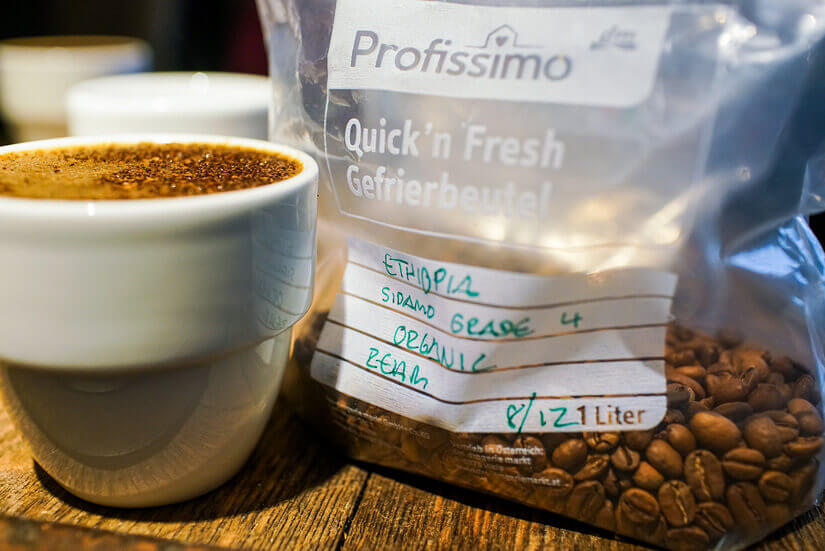
To me, one of the most interesting parts of the tour was when we learned about the history of first, second and third wave coffee. I’ve heard the terms in passing, but I never really thought much about what it all meant. There’s quite a bit to be said about the topic, but here’s a brief rundown of how it all went down in the United States.
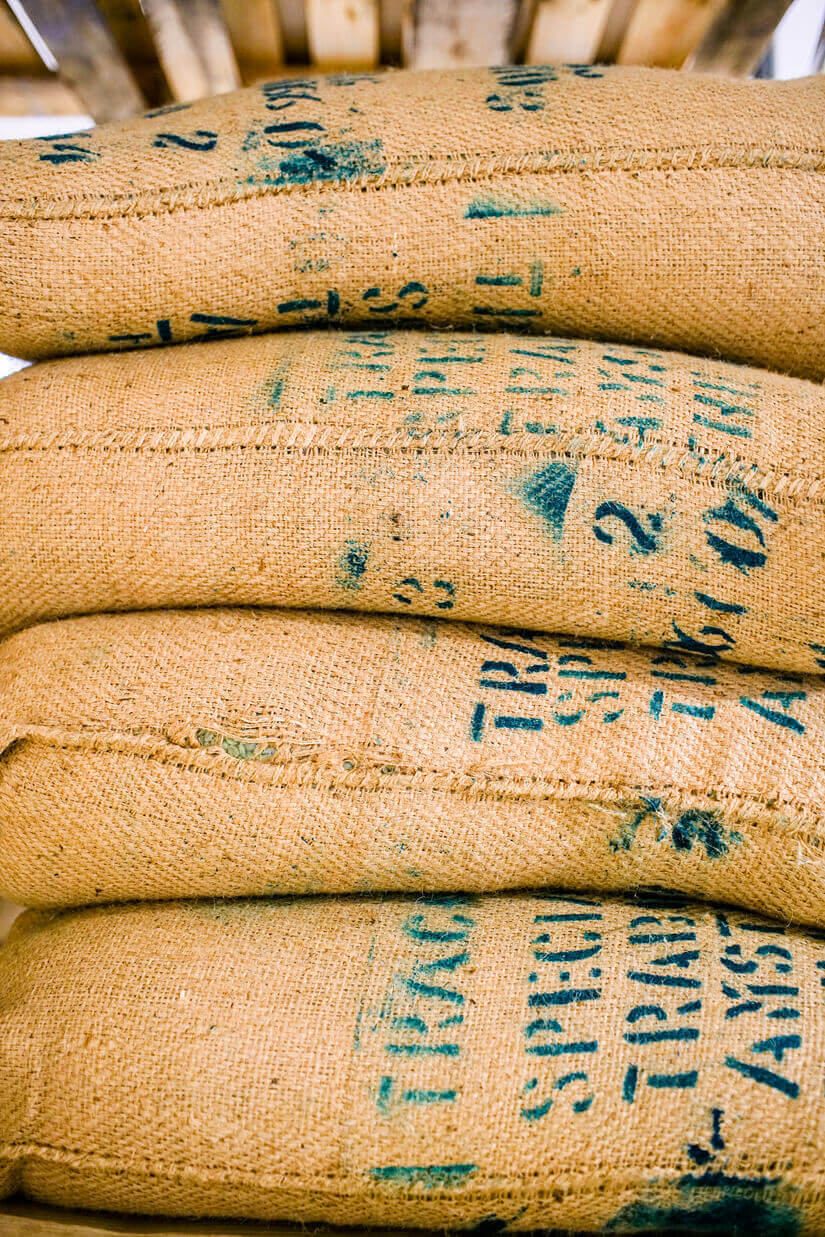
First wave is often defined as the timeframe when coffee consumption grew exponentially. It dates back to the 1800’s when brands like Folgers and Maxwell House became household names. During this time, many innovations happened, such as the invention of coffee pots and packaging advancements, to name a few. But, this wave of coffee is generally connected with “bad” coffee due to taste and quality being sacrificed for convenience and mass production.
Second wave coffee came about in the late 1900’s, and many credit Starbucks opening in 1971 with the beginning of the next wave. The focus in the second wave was fresh roasted coffee beans and specialty drinks like an espresso or a latte. Yes, espresso had been around long before the 70’s, but it wasn’t popular on a mass scale in the States until this time period.
Third wave coffee is relatively new, but it can be compared to the expanding craft beer brewing scene. This movement is more about the character of the coffee itself—it is specialty coffee that is created as a craft and the focus is more on the taste and origins of the coffee bean. The location and altitude of the coffee farm, the soil the plants were grown in, the processing method of the beans, the roasting process, and the brewing method are all important factors in the taste profile of the end product. Ultimately, you shouldn’t have to add sugar and cream to this type of coffee to make it good. Yes, it can be an acquired taste, but quality, black coffee should be able to stand on its own. We haven’t seen the third wave coffee revolution pop up all over Europe yet, although the trend is certainly growing far and wide. It was fun to see the scene exploding in Berlin, and we personally have noticed it in Bratislava, Budapest, and Ljubljana, as well.
Phew, that was a lot, thanks for bearing with me. Now onto more about the tour itself.
Our meeting point and first stop of the day was Kaffee 9 at Markthalle Neun. At this coffee shop, we had a lesson in how to properly taste/smell coffee. Micah and I have done a coffee tasting before, but this one was a bit different. This time around, we didn’t do as much tasting, instead we focused more on picking out and identifying different scents in a variety of coffee roasts. We started off by sniffing little bottles filled with various aromas like green peas, black currant, butter, caramel and roasted peanut. Then we tried to identify scents in the coffee blends. It was fascinating how a little guidance can make you aware of those little, subtle nuances that you never noticed before.
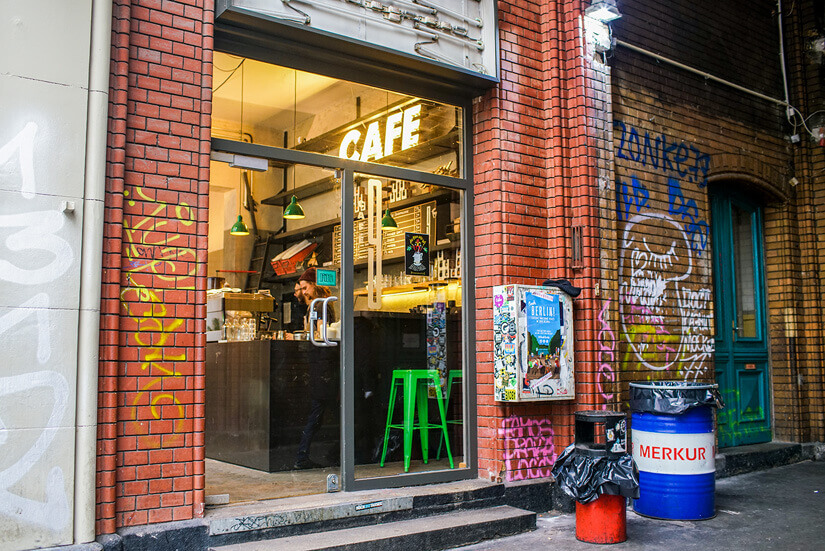
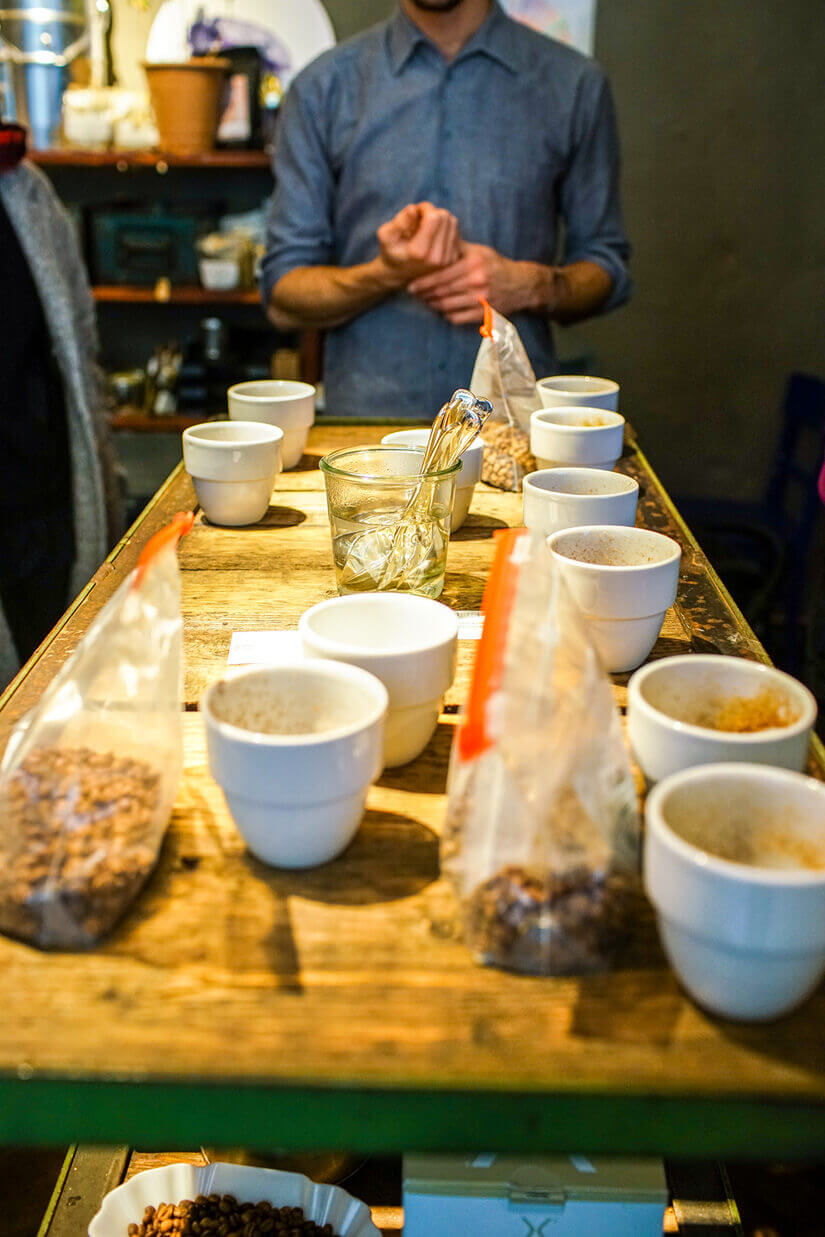
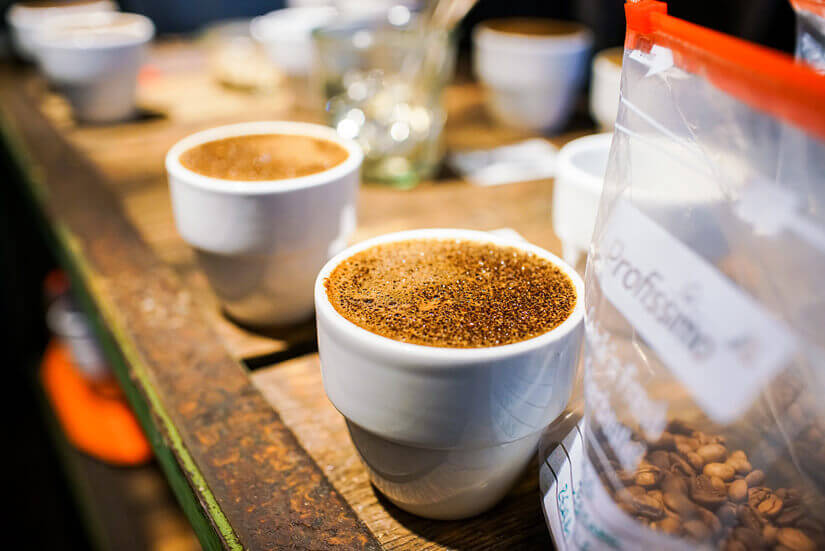
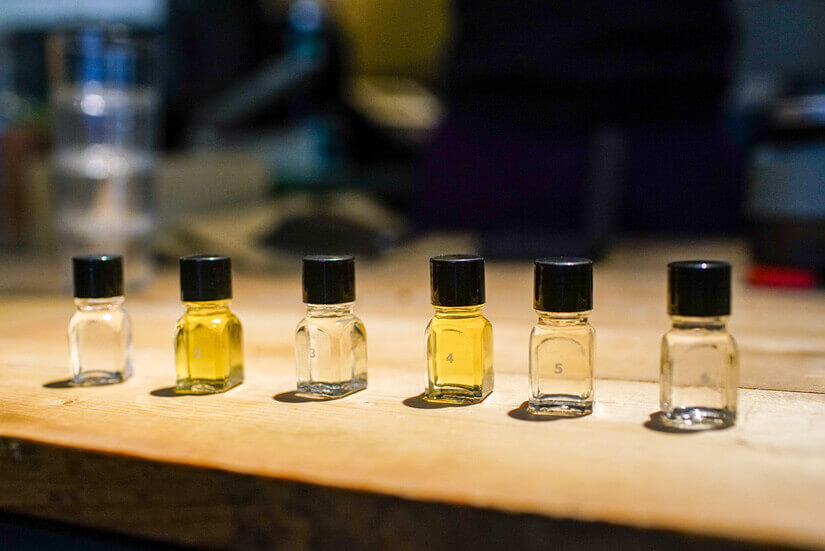
The second stop was Bonanza Coffee, which is one of the oldest coffee roasters in Berlin. It’s been around for over 10 years, and they focus on rare and quality coffee. At this shop, we learned about how coffee is roasted and also about different brewing methods like Aeropress, Chemex. French Press, and Hario v60. I know different brewing methods change the taste of a finished cup of coffee, but I didn’t realize how drastic the difference can be.
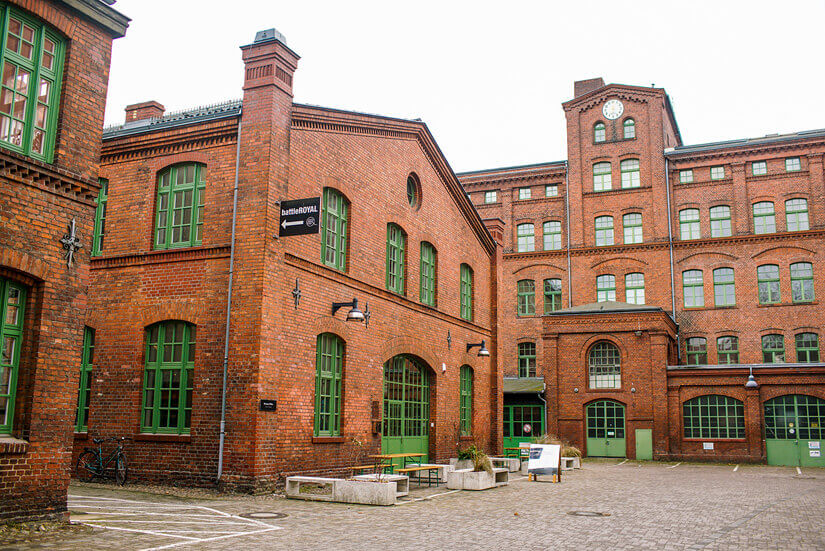
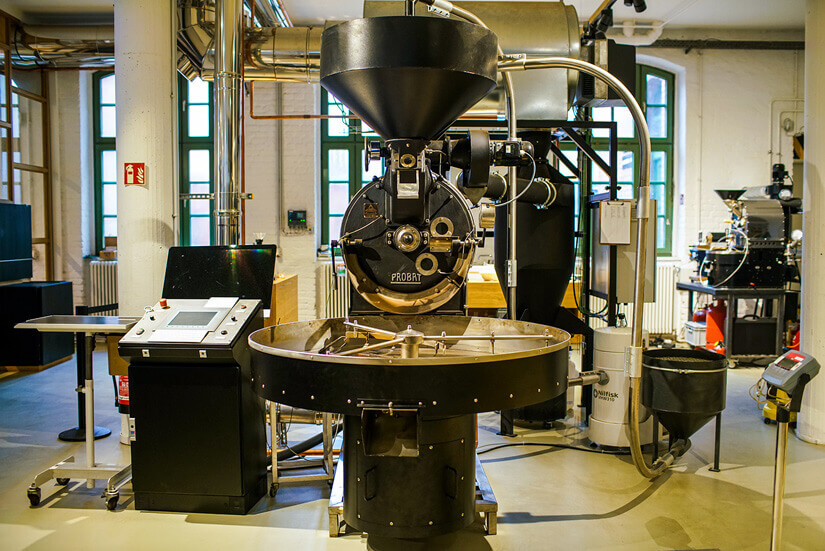
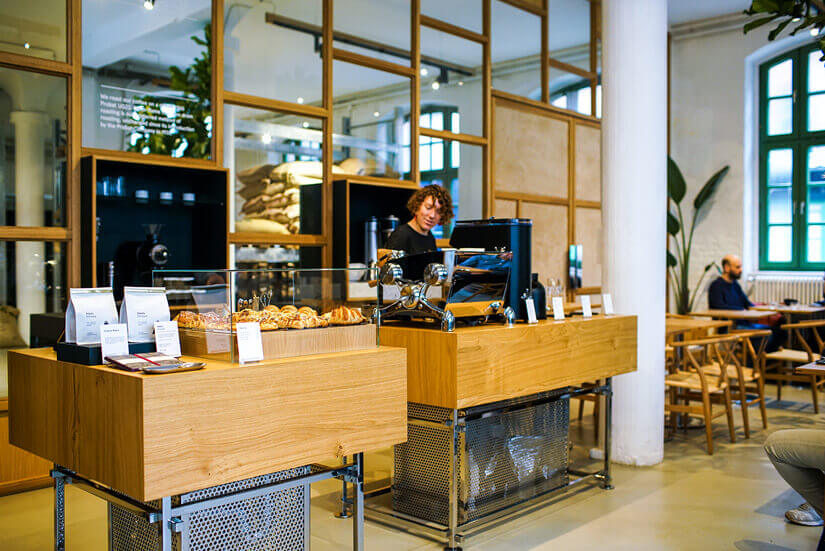
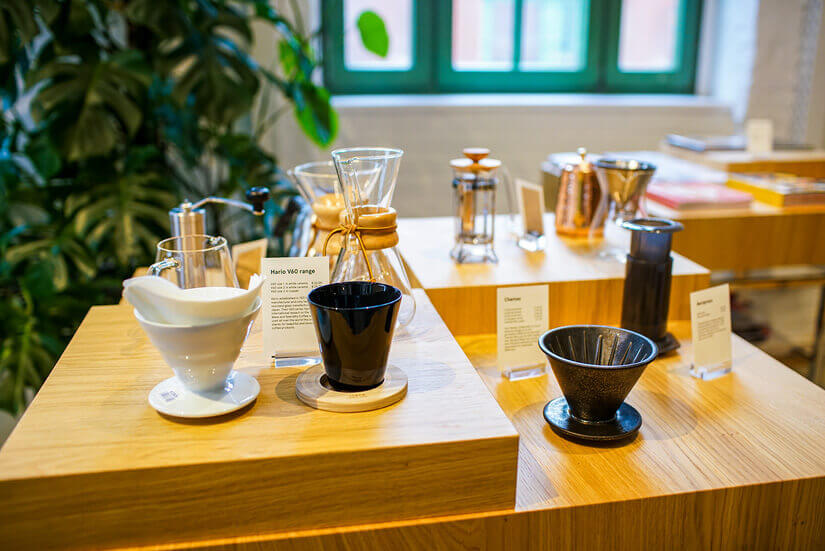
Next up, we made our way over to Lasan Restaurant. Kreuzberg is home to a large Turkish population, so it was fun to learn about this side of the neighborhood, as well. Our guide told us no tour would be complete without learning about the history of the coffee that’s been brewing here for many, many years. Turkish coffee is a method of preparing coffee that has been ground very fine. The coffee is made by brewing the coffee with water and adding sugar to the boil in a special pot which is called a cezve. It can also be made with cardamom mixed in, which ours was. On the side of our cup, we each received a Turkish Delight, which was a little cookie type sweet.
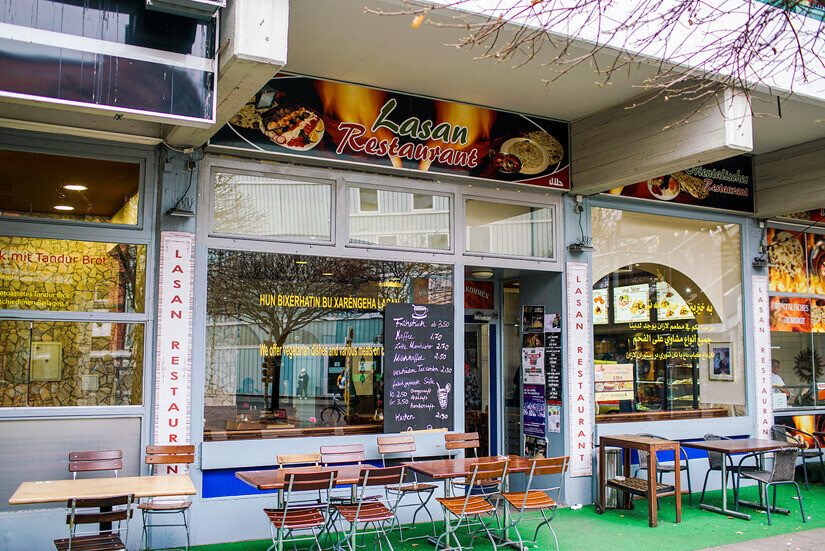
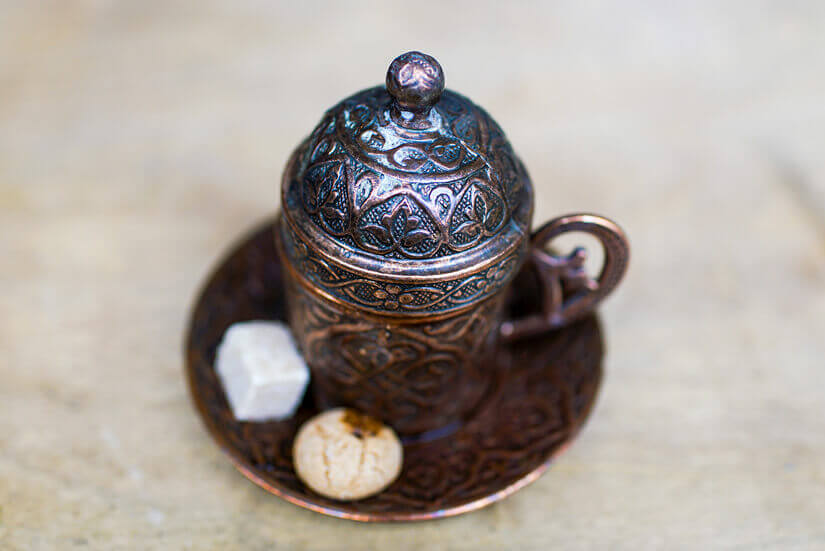
To round out the tour, we ended at Kaffeekirsche. At this location we learned more about the roasting process and different origins of coffee. We took a peek in the back room where all the roasting magic happens and then had a seat in the adorable café that was decorated with refreshing green plants and large tables. While we sipped on our last cup of joe, we closed out the tour with a bit more coffee talk.
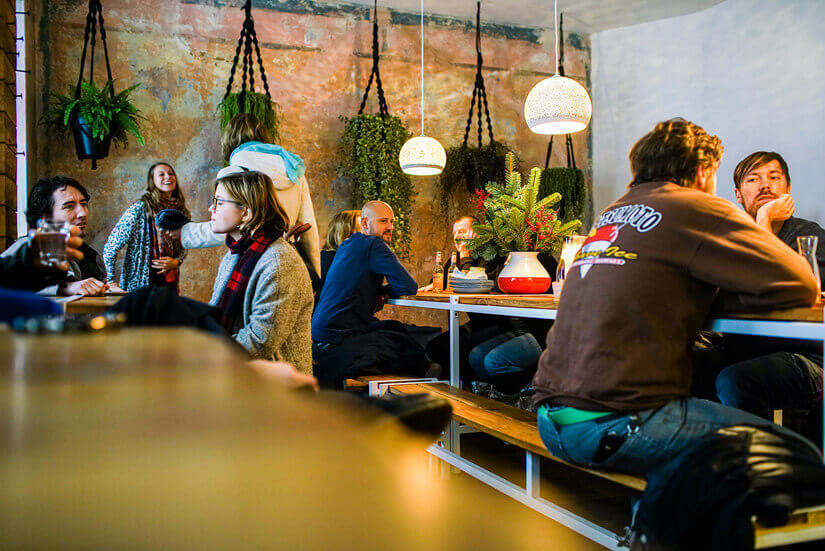
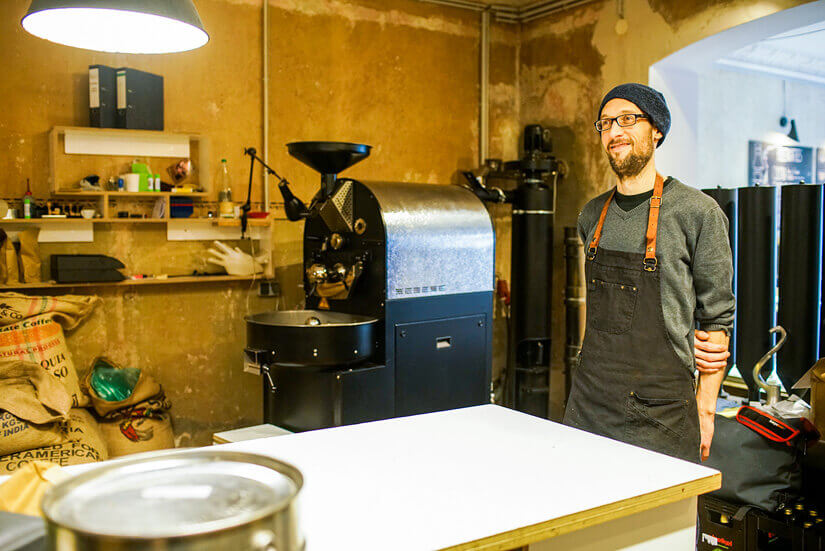
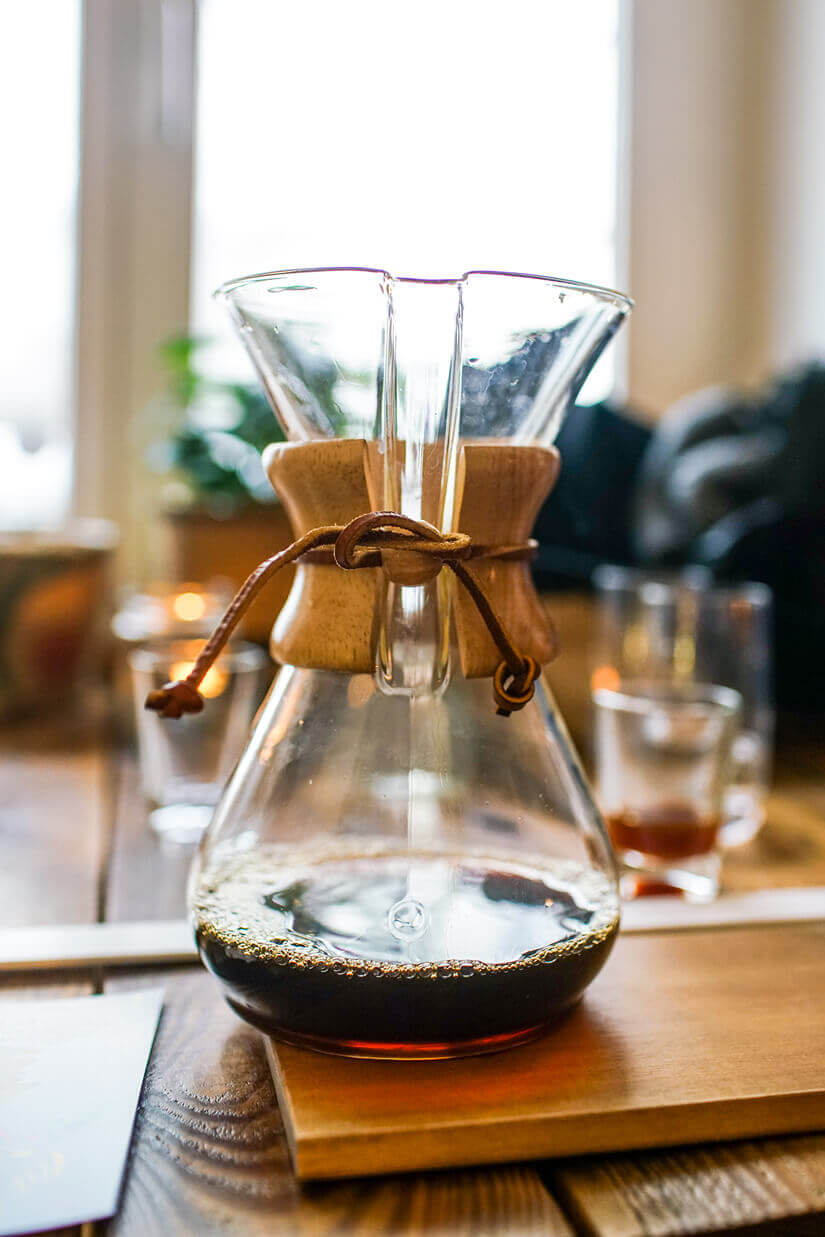
Once we had a nice coffee buzz going, it was time to say our goodbyes and head out to grab lunch. I have to say, a coffee tour in Berlin was definitely a wonderful way to start our morning!
Pin it!
